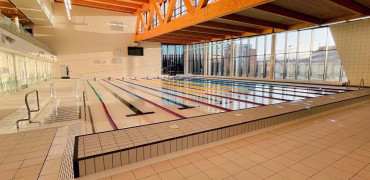The volume of data being collected and held by businesses worldwide is driving growth in the data centre market like never before.
Demand for fast-flowing data storage and access was already high when 2020 saw a global shift to online working, further boosting the world’s need for facilities to handle the increased flow of information.
But the challenge is how to continue this growth sustainably, and it’s a question that’s being asked inside the sector and by its clients.
The three critical criteria for cooling equipment are temperature control, airflow and moisture levels
The key measurement?
PUE (power usage effectiveness) is the figure that’s most often used to measure data centre efficiencies. This number calculates how much energy the IT equipment uses compared to other energy-using equipment, such as cooling and lighting. The ideal PUE ratio would be 1.
However, there are some issues with its use as a measure of sustainability.
For example, PUE does not reflect the conditions in the outdoor environment where a data centre is located, which can heavily influence the need for cooling or the availability of free cooling.
PUE calculations can also be swayed by errors in calculating energy use around the building.
What’s more, energy use is no longer considered the single most important sustainable characteristic. Water use and carbon emissions are increasingly viewed as crucial environmental measures, particularly by clients setting corporate sustainability goals. A recent report from Cushman and Wakefield noted that PUE might be more useful when applied alongside WUE (water usage effectiveness) and CUE (carbon usage effectiveness).
These issues affect the choice of cooling technology within data centres. According to figures from CIBSE, cooling in a data centre uses more energy (45%) than IT equipment (30%). So, the right choice of cooling system that balances efficiency, water use and carbon footprint with cooling capability is vital for these buildings.
Where we can help
At Mitsubishi Electric, we work with many data centre clients worldwide. We help them address the three critical criteria when selecting the right cooling equipment: temperature control, airflow and moisture levels.
Close control (to 1oC) is a requirement for IT equipment which becomes more challenging to meet as the facilities become larger.
Airflow is equally essential to ensure that no hot spots develop around the IT equipment. Avoiding high humidity around computers may seem obvious, but it’s also important not to create an atmosphere which is too dry. This can produce dangerous shorts or allow critical components to dry out.
For some small server rooms, it may be possible to use the same comfort cooling HVAC systems used in the rest of the building. But that’s not a suitable solution for larger data centres. Demanding IT environments require dedicated equipment, and as the size of ‘supercomputers’ increases, the function of cooling systems becomes even more critical.
For example, Mitsubishi Electric recently provided cooling for a facility housing the Davinci-1 supercomputer belonging to Leonardo SpA, an Italian company active in defence, aerospace and security. Davinci has a battery of more than 100 supercomputer units, with a total computing power of 5PFlops – making it capable of 5 quadrillion floating-point operations per second, and with a storage space of 20 million Gigabytes.
Cooling is key to keeping this giant machine operating at optimum capacity. Mitsubishi Electric supplied its energy-efficient water-cooled units and 12W NEXT precisions air conditioners. The setup guarantees redundancy and maximum reliability for this mission-critical application.
Final thoughts
As data centres become more focused on achieving energy, water-use and carbon reduction goals, working with cooling experts who can provide dedicated solutions is crucial.
Mitsubishi Electric has a team of engineers who can assist with cooling system specification and design.
We also offer a wide range of equipment to meet IT cooling needs.
To contact me to discuss your project, please email me warren.knight@meuk.mee.com or visit our dedicated webpage for further information.
Warren Knight is M&E Contractor Business Development Manager




